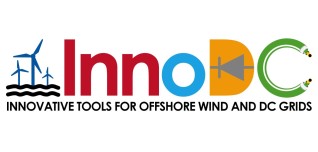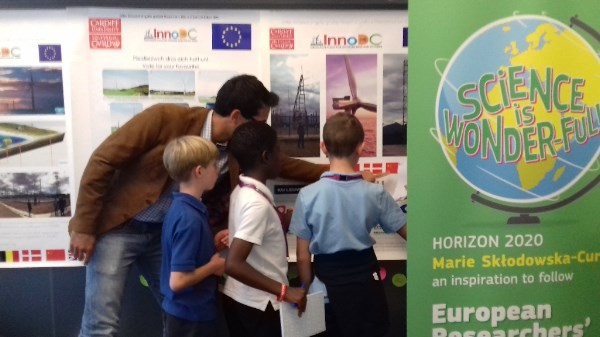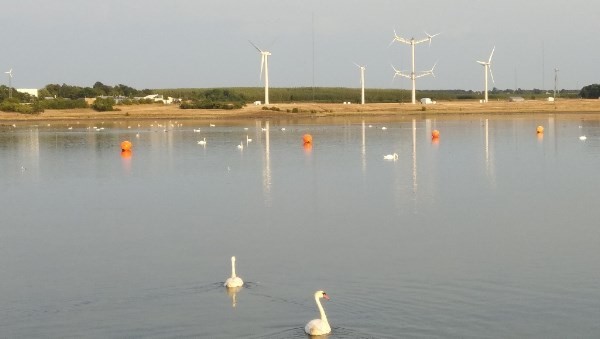Who are InnoDC researchers?
PhD researchers from China, Sri Lanka, Italy, Brazil, Iran, Bolivia, Portugal, Britain, Serbia, India, Canada and Palestine – an international team! Read their profiles.
Where are they?
Their research takes them to universities and industries in Spain, Wales, Portugal, Denmark, Belgium, China and more.
What do they research?
Their work is divided into 3 x areas:
1. Components of DC grids & wind-farms
2. Connection of offshore wind-farms
3. Hybrid AC/DC grid.
Why?
To be international researchers of the future, specialising in offshore wind-power and DC grids.
Do they talk to non-scientists?
Yes! They went back to school in May to visit Alexandre Deulofeu School, Figueres. The teenagers learnt about wind-farms through a mix of Catalan, Spanish, English and demonstrations. A pupil vigorously waved a Japanese fan, which spun mini-turbines made from paper-cups, plates and poles; a pair of socks acted as a weight.
Not being shy, Peng Yang and Davide Pinzan practised their Welsh language skills (“bore da pawb!”) at the Eisteddfod (Welsh-language festival) in August 2018. They enjoyed explaining wind-energy and electricity to passers-by who then voted for their favourite electric pylon.
The Cardiff-based researchers travelled across the Bristol Channel on 28 September 2018 to join the European Commission Researchers’ Night. This science-awareness day takes place every year across numerous European countries. Davide discussed wind-energy with school pupils at Bristol science museum, We the Curious, while Gayan Abeynayake, Wei Liu and Peng linked wind-energy with art at Bristol arts complex, The Island.
What else do they do?
In between researching, writing, presenting and enthusing about wind-energy, they attend courses and events, such as HVDC colloquium in Barcelona and HVDC technology course in Belgium.
We shall update you on their work over the next few years.


